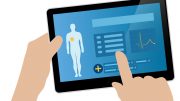The NHS Long Term Plan aims for all parts of England to be served by an integrated care system (ICS). Integrated care aims to provide people with the support they need in the form of joined-up health and care delivery from local councils, the NHS, and other partners. It removes traditional divisions between hospitals and family doctors, between physical and mental health, and between NHS and council services.
In July 2022, the Health and Care Act (2022) established 42 ICSs across England on a statutory basis allowing individual regions’ Integrated Care Boards to start laying out their 5-year plans. Hopefully ambitious boards will aspire to dramatically improve on the NHS and as they formulate their plans, and with that in mind we believe there is real opportunity for modern communications and collaboration services to play a pivotal role in helping to address healthcare providers’ evolving staff and patient experience challenges across an ICS.
The ICS Challenge
To successfully meet the health and care needs across its area, an ICS will need to coordinate services and plan in a way that improves population health and reduces inequalities between different groups. In many areas they will need to deepen the relationship between the NHS, local councils, and other important strategic partners such as the voluntary, community and social enterprise sector. They will also need to improve patient visibility and patient access across all care in their region.
The challenges faced by new ICSs include enabling secure and compliant cross-site communications and collaboration in addition to data sharing for integrated but remote multi-disciplinary teams across primary and community care; interconnecting and interoperating disparate systems and data sources to create a functional relationship and service collaboration between Trusts (even when they’re supplied by separate vendors) and being able to rapidly innovate and introduce new features and services across the ICS area without expensive development costs and long lead times.
The Value of Thinking Connected
The digital transformation of communications and collaboration services will make a real difference. However, achieving world-class integrated care requires a specific approach to communications and collaboration services because, rather than solving pain points in isolation, ICSs must both improve experiences at a local level and scale the solution across a whole region. The key is to empower healthcare providers across an ICS to become joined-up – to think connected. In essence, thinking connected is about how these services can help to improve patient engagement and access to care, creating a more satisfying patient experience, enabling team members to focus on the delivery of great care and enabling greater collaboration between healthcare providers across an ICS.
Thinking connected when it comes to collaboration and communications services is transformative because when these systems span the entire patient journey – before visit, during visit, after visit – they become integral to the improvement design for the ‘total experience’ for patients, clinical staff, and back-office staff. Done right, within an ICS, a well-designed and connected communications and collaboration service has the potential to foster cooperation and enable consistent experiences for both patient and staff across multiple Trusts and organisations.
An ICS with a focus on being connected across all its healthcare providers is not only looking to improve patient outcomes, but also to maximise return on technology spend and eliminate duplication across a region. These ICSs will want to think about how communications and collaboration services could potentially ‘join the dots’ – in practical ways – between their Trust and the other organisations within their new Integrated Care System body. In this way, they will be able to deliver value more rapidly and move closer to the NHSX ‘What Good Looks Like’ framework.
Steppingstones to Digital Transformation
It’s important not to see the patient and staff engagement and experience, in addition to ICS collaboration, as a monolithic ‘done or not done’ transformation. The key to progress is to take a ‘steppingstone’ approach to transformation, focusing on future-proofed coordinated solutions to specific challenges that are currently being experienced by patients and staff. Communications and collaboration services are foundational first steps in the steppingstone series as they must play pivotal roles in digital transformation plans currently in place, or that are still being formulated as part of the Digital Aspirant programme. As plans become firmed up, it’s worth noting that excellence in communications and collaboration services around the patient and staff experience will be a significant driver in maintaining a leading role for the NHS in the future of global healthcare, whilst also tackling some of its most pressing challenges around resources and effectiveness.
There are three key practice areas where communications and collaboration services will help to maximise the positive transformation of the patient and staff experiences and engagement.
- Improving patient access to care, which includes integration with patient data; management of administrative services such as appointments, prescriptions, test-results, and referrals in a way that works for all parties, constructive and suitable access to clinicians and specialists (ensuring control is maintained); enabling more multifaceted remote patient treatments and monitoring whilst continuing to maintain quality of care; effortless, non-repetitive, digital data capture and organisation; secure, reliable access to healthcare services over existing and new communication channels such as video and chatbots.
- Creating a better patient experience, which includes integrating digital therapeutics across a range of communications and collaboration systems and devices; creating scalable on-demand services without overwhelming staff; making digital services understandable and accessible to all patients, no matter what their age or technical proficiency; creating more personalised care experiences cost-effectively and at scale and rooted in scientific understanding.
- Enabling team members to focus on great care by leveraging insights to give staff the ability to make better decisions; reducing inefficiencies across calendars and resource usage to push wait, diagnosis and treatment times down; maximising specialist resource utilisation to tackle the elective backlog without adding to burnout; and removing siloes and complexities from Trust-wide communications and collaboration services, one of the most frustrating aspects of failed or stalled digital transformation projects.
Technology Shopping List
There are some key tech requirements for a connected approach to Integrated Care. Integrated Care System boards and healthcare consultants providing direction to IT teams should ask them to look specifically at deployment modes, availability, security and compliance, interoperability and workflow automation.
Let’s look at each of these in a bit more detail.
- Deployment modes matter because these modes need to be able to talk to each other across Trusts, which means there needs to be a Cloud element to the communications and collaboration systems somewhere.
- Availability is crucial because you can’t have downtime in inter-Trust communications, ever.
- Security and compliance must always be a top priority so you need a technology vendor that can ensure communications and collaboration services between Trusts and healthcare providers are secure and reliable and that patient and operational data is protected against breaches and the ICS protected from legal penalties.
- Interoperability between existing systems and all digital healthcare applications is now indispensable so that the value of digital transformation can be maximised.
- Workflow automation is vital to help manage complexity in areas such as on-call management, appointments, prescription, results, payments, and referral management, specialist team collaborations, and next steps in the patient journey, which will be happening across NHS Trusts and other care providers within the Integrated Care System.
A Developer Mindset
The steppingstone approach can be supported by adopting a developer’s mindset to help tackle the enormity of digital transformation. This means using the lead NHS Trust in the project as a pilot then taking learnings from that pilot rollout and gathering feedback from users before tweaking and improving. The next step is to draw up a list of recommendations and sharing project details with a mirror project team in the ICS, so that they can roll out faster, then ‘rinse and repeat’.
A useful place to start is to benchmark where a healthcare provider is in terms of innovation readiness using a healthcare innovation maturity model assessment tool. This benchmarks results against industry standards and will provide a good idea of an institution’s ability to achieve its goals.
By Dave O’Shaughnessy, Healthcare Practice Leader – Avaya International





